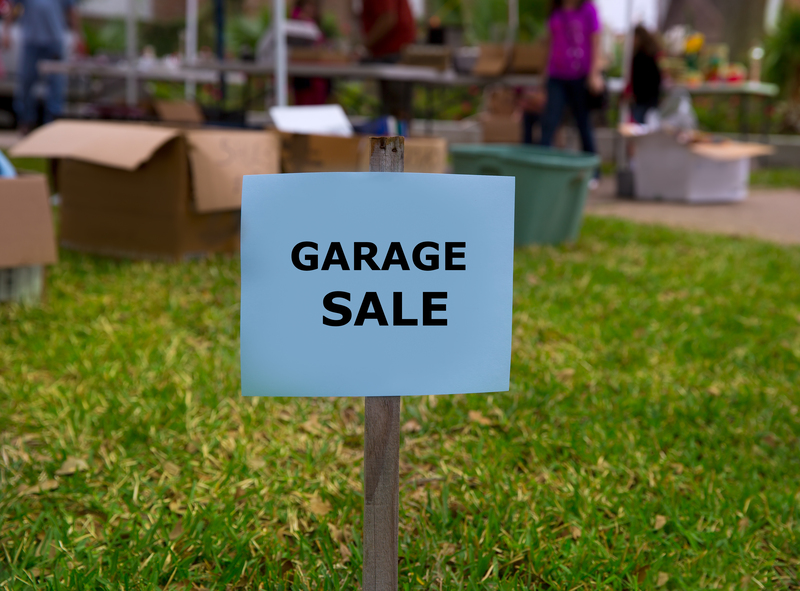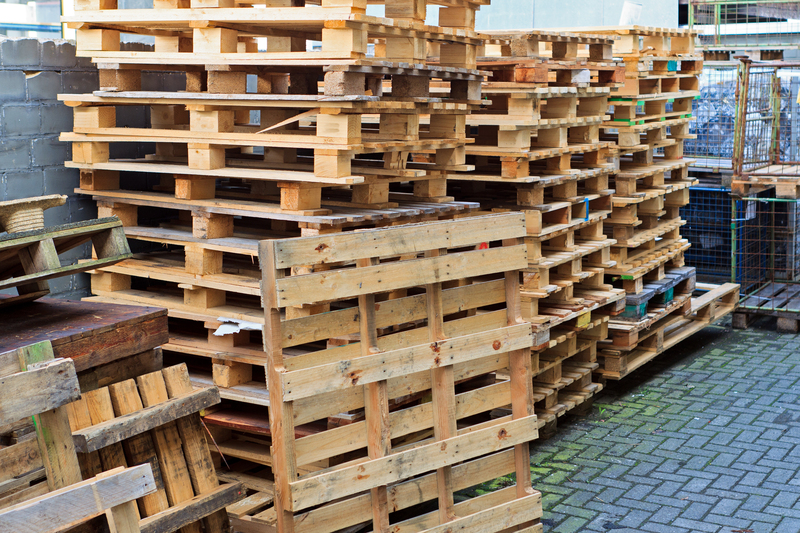How to Properly Throw Away PPE Waste Without Harming Nature
The global demand for Personal Protective Equipment (PPE) has soared in recent years, especially since the COVID-19 pandemic. Items like face masks, gloves, gowns, and face shields have become common in everyday life. However, improper disposal of PPE waste poses a severe threat to the environment. In this comprehensive guide, we'll discuss how to properly throw away PPE waste in ways that help protect nature, human health, and wildlife.
Understanding PPE Waste and Its Environmental Impact
PPE waste comprises single-use items made from materials such as plastics, rubber, and non-woven fabrics. These materials can take hundreds of years to decompose, causing significant harm to our ecosystems if not disposed of correctly.
Common Types of PPE Waste
- Face Masks: Surgical and cloth masks, N95 respirators
- Gloves: Nitrile, vinyl, and latex gloves
- Gowns and Aprons: Disposable hospital gowns and aprons
- Face Shields and Goggles: Plastic visors and protective eyewear
- Shoe Covers and Hairnets: Usually made from polypropylene plastic
PPE litter can block waterways, endanger wildlife, and contribute to microplastic pollution. Animals may ingest or become entangled in these items, leading to injury or death. Moreover, improper PPE waste disposal can spread pathogens, creating public health risks.

Best Practices for Proper PPE Waste Disposal
To minimize environmental damage, it's crucial to understand and implement the right procedures for discarding PPE waste responsibly. Here are essential steps you can follow:
1. Do Not Litter or Flush PPE Items
- Never toss used PPE on the ground or in public spaces.
- Do not flush masks, gloves, or other PPE items down toilets or drains. These materials do not break down and can clog sewage systems, eventually ending up in rivers and oceans.
2. Segregate PPE Waste from Regular Waste
Keeping PPE waste separate from recyclable and organic waste is vital. PPEs are generally not recyclable due to potential contamination. Mixing them with other waste streams can pose health risks to waste handlers and block effective recycling or composting efforts.
- Designate a special bin (preferably lined with a plastic bag) for PPE waste at home, workplaces, and public spaces.
- Use bins labeled "PPE Waste Only" to prevent confusion.
3. Use Proper Containers and Bags
- Dispose of all used PPE in a sturdy, leak-proof bag.
- Seal the bag tightly to avoid accidental spills or potential virus transmission.
- Use double-bagging if the items are visibly contaminated or used in medical facilities.
4. Follow Local Guidelines for Infectious Waste
Many municipalities have specific instructions for disposing of PPE waste, especially if it comes from healthcare settings or COVID-19 quarantine situations. Always check:
- Local council websites or waste management authorities for up-to-date PPE disposal protocols.
- Special collection services for biohazard or infectious waste, if available in your area.
5. Never Burn PPE Waste at Home
Burning PPE at home is extremely harmful to the environment and human health. Most PPE materials are made of plastics like polypropylene. When burned, these release toxic fumes and dioxins, contributing to air pollution and respiratory problems.
6. Consider Reusable PPE Options
An effective way to reduce PPE waste generation is to choose reusable products when appropriate and safe:
- Cloth masks--washable and reusable, provided they meet filtration standards.
- Reusable gowns and face shields--can be disinfected and reused multiple times, minimizing single-use waste.
*Always follow official health guidelines to ensure your safety is not compromised by use of reusable PPE.*
PPE Waste Disposal Tips for Households
Proper PPE disposal at home is critical to preventing environmental harm, especially since household PPE waste is often mixed with general trash. Here's a step-by-step guide for safe and eco-friendly PPE disposal at home:
- Carefully remove PPE without touching the outside surfaces. Sanitize hands after removing masks or gloves.
- Bag PPE waste in a small plastic bag, preferably a biodegradable one.
- Seal the bag tightly before throwing it in the general waste bin, not the recycling bin.
- Wash your hands thoroughly after handling PPE waste.
- Do not place PPE waste in compost or organic bins; these items are not biodegradable and can contaminate compost.
Bonus tip: If you have a significant amount of PPE waste due to illness or isolation at home, let your waste collector know in advance so they can take precautions.
Proper PPE Disposal for Businesses, Schools, and Healthcare Facilities
1. Provide Clearly Marked PPE Disposal Bins
- Place bins in entrances, exits, and areas where PPE is used or removed.
- Label bins clearly: "PPE Waste Only--No Recyclables" to avoid contamination.
2. Train Staff and Users
- Conduct briefings on correct PPE removal and disposal procedures.
- Place visible signage with instructions to prevent improper disposal.
3. Arrange for Safe Waste Collection
- Work with licensed waste management companies experienced in handling medical and infectious waste.
- Request regular collection schedules to prevent overflow and accidental littering.
4. Encourage the Use of Reusables
- Where applicable, prioritize reusable protective gear that meets health regulations.
Innovations and Alternatives: Reducing PPE Waste Generation
Innovative thinking is paving the way for new solutions to the global PPE waste crisis. By integrating these practices, we can reduce environmental impact while staying protected.
Biodegradable PPE
- Some companies are developing biodegradable face masks and gloves using plant-based materials.
- These products break down faster and are less harmful to nature.
PPE Recycling Initiatives
- Specialized recycling programs exist for PPE made of certain plastics, but never place PPE in standard recycling bins--contamination risks are high.
- Contact local environmental groups or health departments to inquire about PPE recycling options near you.
Upcycling and Creative Solutions
- Some community projects collect clean PPE wastes for use in art or materials for eco-bricks.
- While not a large-scale solution, such efforts raise awareness about the impact of PPE on our environment.
Why Proper PPE Waste Disposal Matters
Improper disposal of PPE waste not only pollutes land, water, and air but also exposes sanitation workers and wildlife to harm. By following appropriate procedures:
- We keep **hazardous waste** out of oceans, rivers, and forests.
- We protect biodiversity and endangered species.
- We support a cleaner, safer world for current and future generations.

Frequently Asked Questions About PPE Waste Disposal
1. Can you recycle PPE waste?
Most standard PPE waste, such as masks and gloves, cannot be recycled via household recycling bins due to potential contamination and material composition. However, some specialized facilities may accept certain PPE plastics. Always check with your local authorities before attempting to recycle PPE items.
2. Is it safe to burn PPE waste in incinerators?
While industrial incinerators can safely process medical waste under controlled conditions, never burn PPE waste at home or in an open environment, as this releases harmful pollutants.
3. What are the environmental risks of improper PPE disposal?
Improperly discarded PPE can cause soil and water contamination, harm wildlife through choking or digestion, and contribute to the growing problem of microplastics in the environment.
4. What should I do if I see PPE litter in public places?
If you're equipped with gloves or a litter picker, carefully collect the waste and dispose of it in a labeled PPE waste bin. Wash your hands after handling any discarded items.
5. Can compostable masks and gloves go into compost bins?
Only if they are specifically labeled home compostable (not just biodegradable), and are not contaminated with hazardous substances. Generally, it's best to follow product instructions and local regulations for compostable PPE products.
Conclusion: Every Choice Matters--Dispose of PPE Responsibly
As our use of personal protective equipment continues, it is critical that we understand how to dispose of PPE waste without harming nature. By adopting safe and responsible practices--from segregating waste and using correct bins to exploring innovative solutions like biodegradable PPE--we can drastically reduce the environmental footprint of our necessary protective measures.
Remember: Every mask, glove, and face shield you dispose of correctly is a step towards protecting both public health and the health of our planet. Share this knowledge with others, advocate for better policies, and always choose sustainability where possible.
Let's keep ourselves safe--without sacrificing the safety of the natural world.